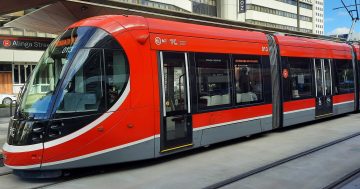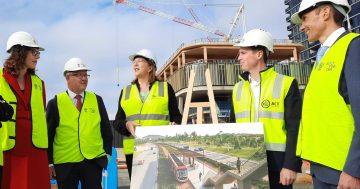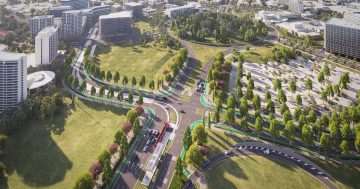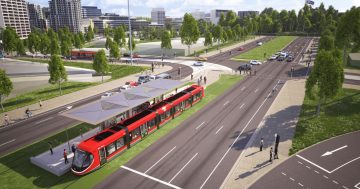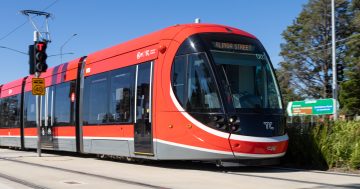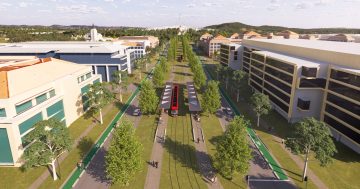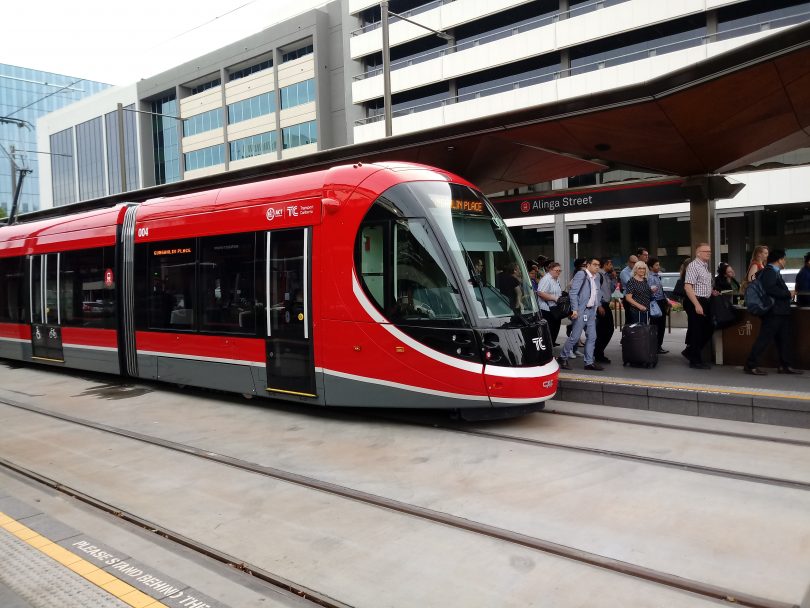
Light rail in the city. Extending the network to Woden should not come at the cost of vital services, says ACTCOSS. Photo: File.
ACT social welfare advocates are worried the cost of the next stage of light rail may impact the Budget and take resources away from vital services for Canberra’s disadvantaged.
In its submission to the current consultation on light rail Stage 2 from the City to Woden, the ACT Council of Social Services has called for greater transparency on the cost of the project, saying if other areas of the Budget such as health or housing are affected there needed to be a broader conversation with the community.
ACTCOSS CEO Emma Campbell said there were already challenges in health service delivery and a shortage of 3,000 public housing properties and 1,600 homeless in the ACT.
”We need to make sure that if decisions are having to be made about resources as a result of light rail, investments in things like health and education and, in particular, housing are not being placed secondary to the light rail network, and if it is there needs to be a discussion about that,” she told Region Media.
Some commentators have accused the Barr Government of cutting health spending and scaling back infrastructure such the Canberra Hospital expansion while building light rail.
The ACTCOSS submission also calls on the government to ensure community facilities and commercial infrastructure in the Town Centres such as Woden keep pace with the influx of new residents in the proliferating apartment towers, the development of which ar being driven, in part, by the attraction of light rail.
”This should be considered alongside the development of transport infrastructure in the ACT,” the submission said.
It also calls on the government to consider a free light rail service or at least extending and better targeting public transport concessions to more people and families on low incomes for whom transport is a significant cost.
Dr Campbell said there were cities across the world where public transport was free or cost very little to use.
She said ACT public transport fares were expensive, rising more than twice that of the national CPI rate.
The ACT Cost of Living Report highlighted that the ACT’s public transport CPI had increased by 9.1 per cent compared with a national public transport CPI increase of only 4.2 per cent.
”One of the goals of public transport is to make it comprehensive, and the best way of doing that is to encourage as many people as possible to use it, and that creates the impetus for bigger networks and more frequency,” she said.
”It’s about making public transport so core to the way our city works that it’s a fit for everybody, including those who face transport disadvantage, not just for those who work nine-to-five in the major city centres.”
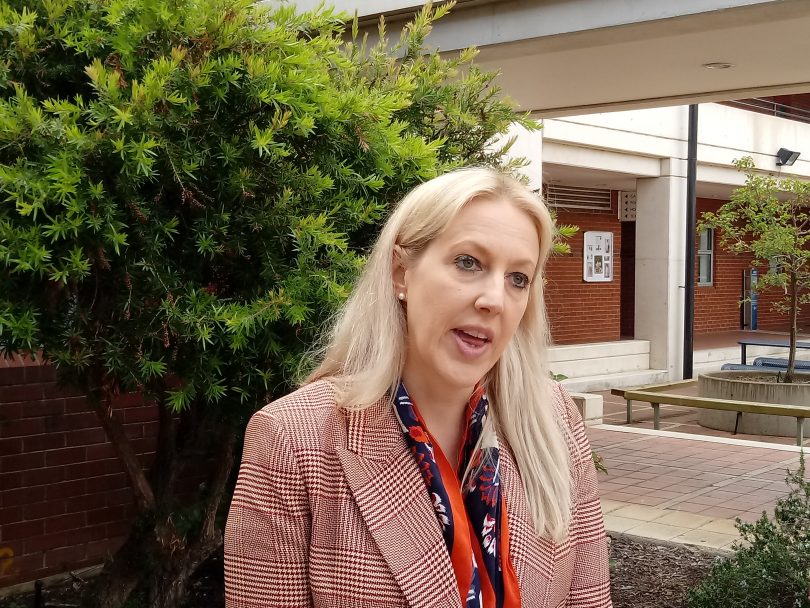
Dr Emma Campbell: ”It’s about making public transport so core to the way our city works that it’s fit for everybody including those who face transport disadvantage, not just for those who work nine to five in the major city centres.” Photo: File.
Dr Campbell said targeted concessions could be extended to people such as casualised workers and people on low incomes who may not have a Centrelink card or other formal means of demonstrating disadvantage but struggle with travel costs.
The submission also calls for the public transport network to connect people with community facilities such as hospitals and health centres, and be accessible to all, especially people with disabilities and older people.
”A full assessment of the physical and sensory access features of the vehicles and the paths of travel to them should be undertaken by an appropriately qualified disability access consultant and people with lived experience of mobility barriers,” the submission says.
”There must be a seamless path of travel to pick-up and drop-off points.”
Dr Campbell said this went beyond meeting legislative requirements.
”People with disability and older people should not be an afterthought, and making these transport services accessible should not be a tick-the-box exercise. It has to involve people with lived experience, it has to be tested … so the service that is delivered in the end, even if it takes a little bit longer or it’s harder work because you need to consult, serves everybody in Canberra,” she said.
Transport Minister Chris Steel said light rail had now been brought to three ACT elections and the government was committed to building on the success of the first stage by extending the line to Woden and extending the benefits to other parts of Canberra.
He said the government has been upfront about the cost of light rail Stage 2, which is an investment in building the future of our city and the integrated public transport system the ACT needed as Canberra grows.
”We have outlined our plans to continue to invest in health, education and public housing and community, city, emergency and other services at the same time as investing in better public transport,” Mr Steel said.
”Like other cities, Canberra should have access to high-quality mass transit that improves amenity and connectivity for the whole of our community including vulnerable Canberrans who rely on public transport.”
